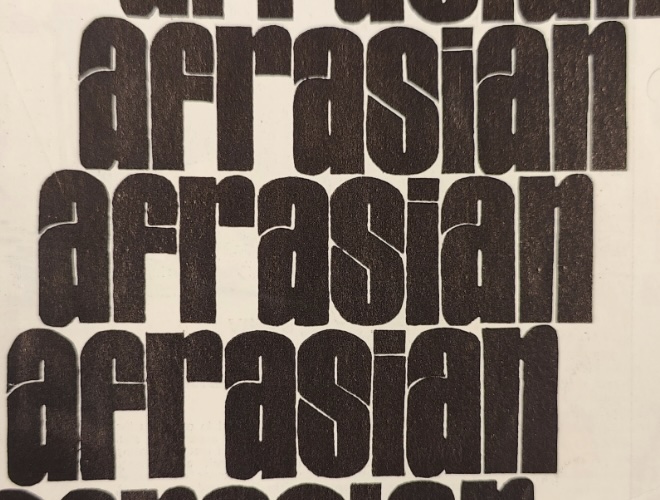By Gabriel Mullins, BA History
“The tension was clear between the traditionalism of the school and the progressivism that the institution’s very existence demands.”
Much has changed in the last 60 years, but there has been a common thread at SOAS- the existence and incessant publication of our student newspapers. We have access to many in the British Library and our own special collections – their morphology is complicated, moving through the decades from newsletters on carbon paper to coffee table magazines for turtleneck-clad mid-century academics and finally to the website or recycled news sheet this is rendered on. However, when looking for a way to examine where we have come from as an institution, Afrasian (published 1961-75) stands out as a colourful (yet monochrome) microcosm of college life in years past and an interesting opportunity for reflection on both an institutional culture lost to time and our capacity as a collective to change.
The Afrasian of the early 60s abounds with descriptions of ‘college hops’ (late licences), rowdy debates, many, many sporting defeats and nominees for “miss fresher”, amongst other incidences of gratuitous misogyny. It is awash with a certain brand of British cynicism – to a modern reader it is painfully 60s. Simultaneously, it does make some serious attempts to engage with international affairs and justice for the student body. Reporting includes ‘Digs and The Colour Bar’, Oswald Mosley’s invitation to speak at the union, the University of London’s attitude to Immigration Controls, and developments in politics and current affairs both domestically and around the world. Its commentary is generally progressive and international but only to a point – when congratulating SOASian Ismail Balogun in issue No.2 for his election as a national delegate to the WUS the paper completely fails to mention the scale of his achievements as one of the first Black delegates.
Emeritus Professor Hall (S.E. Asian History) is quoted in issue No.4 as saying, when referring to the difficulty of persuading white British students to take S.E. Asian History, ‘After all, these are the students we are interested in’. Today, this comment would be a genuinely outrageous news item – a resigning issue – and might even make the national papers. However, Afrasian consigned the quote to a sarcastic joke in ‘Saying Of The Week’. This could be simply reflective of the conservatism of the British establishment, and thus the University at the time, but it certainly has something to do with the fact that the paper, despite taking writers and staff from around the world, was still written from a perspective that was mostly white, male, and middle class. Social justice pieces were sometimes presented as main stories but social issues such as racism itself were simultaneously rarely the focus of discussion, even if alluded to in reports of union meetings and campaigns. The tension was clear between the traditionalism of the school and the progressivism that the institution’s very existence demands.
By the late 60s, things had changed. The magazine had been dressed in a glossier, artsier jacket and bawdy gossip columns and tales of drinking and squash-club-bound debauchery had been replaced by long-form poetry and page-long bibliographies. The radicalism of the years leading up to and during international university protest movements wasn’t to be wholly reflected in Afrasian, though, as student organising moved to newsletters and zines and the functioning of the students’ union broke down in the face of corruption and apathy. This left Afrasian as more of an academic journal published on behalf of the SU than a newspaper. Simultaneously, the university that produced it was changing as well. SOAS had received a deluge of funding following the recommendations of the Hayter report, and a new building for the library was soon to be under construction. The concentration of government funding for the study of Africa and Asia into SOAS meant that its research output increased and the school’s profile grew. Afrasian was to be read in university staff rooms and professors’ solariums around the world, from Princeton to Nairobi. In embracing more modern practices, international academia, and government money, had SOAS lost something of its soul and was this seen in the transformation of Afrasian? The short answer is no – and good riddance to what was there.
Eventually, Afrasian sunk and resurfaced once more in the 70s as a more radical, student-oriented journal, publishing innovative articles and setting the world to rights in a way that is more similar to today’s SOAS Spirit, but without much of the levity and diversity of content that would make it actually readable. As this article stands this leaves it to us to imagine for ourselves how change came about, knowing that it is possible and hopefully taking away the fact that sometimes, we need to change completely in order to meaningfully move on – a lesson that would be particularly useful to some university administrators today.
Photo credits: British Library Periodicals Collection
